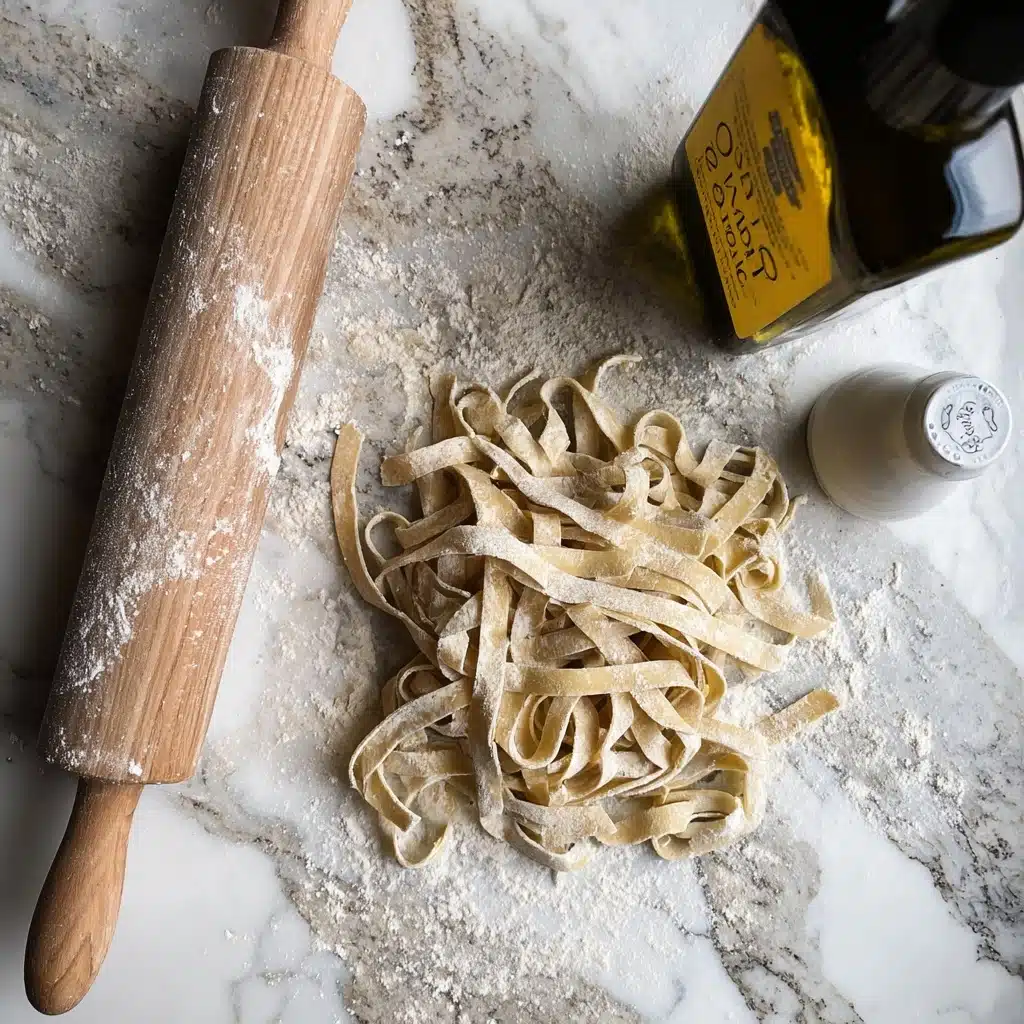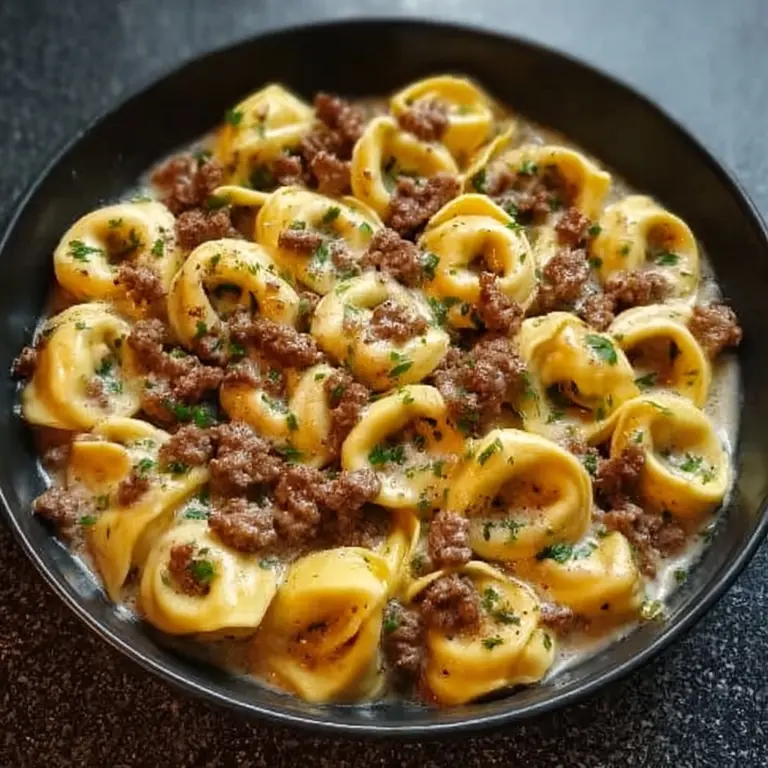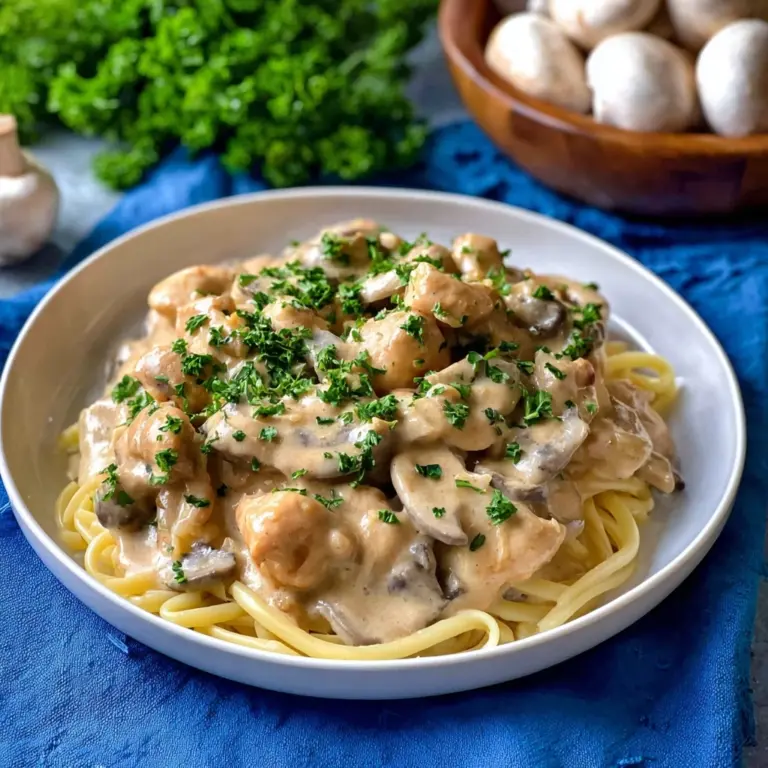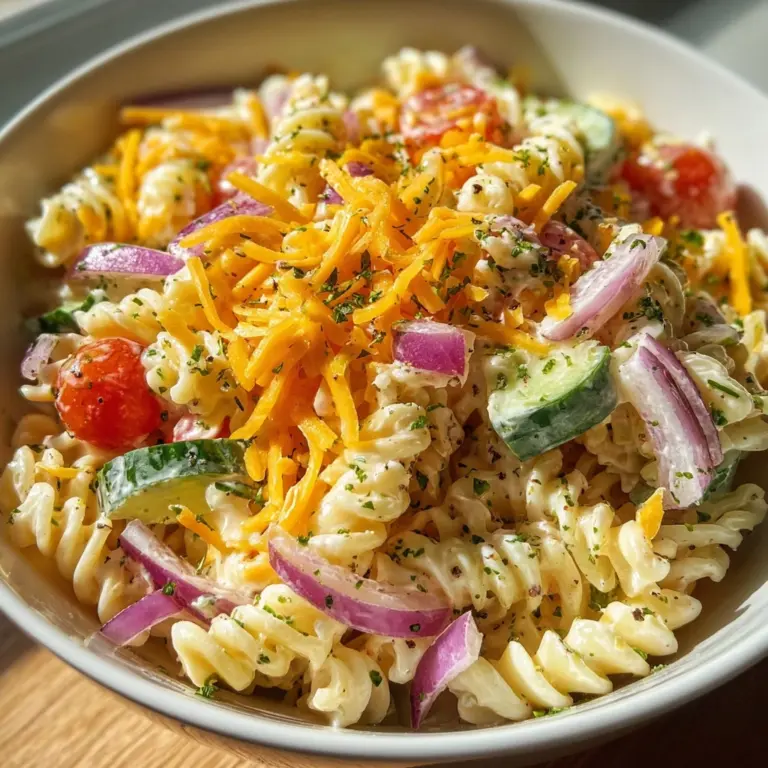Handmade Pasta: Small Batch Recipe
If you’ve ever dreamed of creating fresh pasta right in your own kitchen, this recipe for Handmade Pasta: Small Batch is an absolute game changer. It’s a joyful, hands-on experience that yields tender, silky strands of pasta crafted from just a handful of simple ingredients. Perfect for intimate dinners or just treating yourself to something truly special, this recipe strips pasta-making back to its most authentic form. Let’s dive into how making Handmade Pasta: Small Batch can bring old-world charm and fresh homemade flavor to your table.

Ingredients You’ll Need
Gathering the right ingredients is key to achieving that perfect balance of texture and flavor in your pasta. Each component plays a vital role in the dough’s elasticity, taste, and richness, making simplicity here an absolute virtue.
- 1 ½ cups flour: Provides the perfect structure and base for the dough, ideally all-purpose or “00” flour for smooth results.
- 2 eggs: The heart of your pasta making, eggs add richness and bind the dough together while lending a golden hue.
- 2 teaspoons salt: Enhances flavor throughout the dough, a little goes a long way in pasta.
- 2 teaspoons extra virgin olive oil: Adds softness to the dough and a subtle fruity note that deepens the flavor.
- 3 teaspoons water: Helps hydrate the dough just enough to bring it together without becoming sticky.
How to Make Handmade Pasta: Small Batch
Step 1: Prepare Your Workspace and Ingredients
Start by clearing off a clean surface — this will be your pasta studio for the next little while. Mound the flour on your workspace, reserving about a quarter cup for dusting later, and create a large well in the center to cradle your eggs.
Step 2: Combine the Wet Ingredients
Carefully crack the eggs into the flour well. Add salt, olive oil, and one teaspoon of water into the eggs. This mixture will be the binding base that holds your flour together, so mix gently but with intention.
Step 3: Begin Incorporating Flour
Using a fork, gently beat the eggs and slowly start pulling flour into the wet center from the inside edge of the well. This gradual merging allows the dough to come together smoothly without lumps, turning the liquid base into a sticky, doughy mass.
Step 4: Knead the Dough
Once the dough starts to come together and becomes difficult to stir with a fork, begin kneading with your hands. If it feels dry, add water teaspoon by teaspoon. The goal is a slightly wet but elastic dough. Knead for about 10 minutes until smooth and shiny – this is where the magic happens, developing gluten for that perfect chew.
Step 5: Rest the Dough
Shape your dough into a tight ball, wrap it in plastic wrap to prevent drying, and refrigerate for an hour. Resting relaxes the gluten, making it easier to roll out and less likely to shrink as you cook it later.
Step 6: Roll and Cut Your Pasta
After resting, dust your work surface generously with flour, then cut your dough ball in half. Roll out each portion as thin as possible — you should be able to see the silhouette of your hand under the sheet. Let it rest briefly, then roll into a loose tube and slice into small strips or your desired shape.
Step 7: Dry and Cook Your Pasta
Allow your cut pasta to dry for at least 30 minutes; this prevents sticking when you cook it. To cook, bring salted water to a rolling boil, drop in your pasta, and cook for 2 to 4 minutes until the noodles float to the surface, indicating they are perfectly al dente.
How to Serve Handmade Pasta: Small Batch

Garnishes
The delicate nature of your homemade pasta pairs beautifully with simple, fresh garnishes. Try a drizzle of extra virgin olive oil and a sprinkle of freshly grated Parmesan or Pecorino cheese. Fresh herbs like basil or parsley can add a burst of color and freshness, enhancing both the taste and the presentation.
Side Dishes
Handmade pasta shines when accompanied by light, complementary sides. A crisp seasonal salad with a zesty vinaigrette makes a lovely balance to the richness of the pasta. Alternatively, roasted vegetables, garlic bread, or a lightly dressed Caprese salad all work wonders to round out your meal.
Creative Ways to Present
Playing with presentation elevates the experience. Serve your pasta twirled elegantly on a rustic ceramic plate or neatly stacked as delicate nests. Consider topping with a few edible flowers or a crack of fresh black pepper to add flair. Handmade pasta’s charm is as much in its appearance as it is in flavor, so have fun with plating!
Make Ahead and Storage
Storing Leftovers
If you have any pasta dough left over after your small batch, wrap it tightly in plastic wrap and keep it refrigerated for up to two days. Once rolled and cut, cooked pasta can be stored in an airtight container in the fridge for up to three days, making it convenient for quick meals later.
Freezing
To freeze fresh pasta, spread the cut noodles on a floured baking sheet to freeze individually until solid, about an hour, then transfer them to a freezer bag. This method prevents sticking and preserves their delicate texture. Frozen pasta keeps well for up to two months.
Reheating
Reheat leftover cooked pasta by briefly tossing it in boiling salted water for 30 seconds to a minute until warmed through. Avoid microwaving as it tends to alter texture. Another option is a quick sauté in butter or olive oil with a splash of pasta water to revive that fresh-cooked mouthfeel.
FAQs
Can I use whole wheat flour for this Handmade Pasta: Small Batch recipe?
Absolutely! Whole wheat flour can add a nuttier flavor and denser texture. You might want to blend it with all-purpose flour to keep the dough pliable and prevent it from becoming too heavy.
What if my dough is too sticky or too dry?
It’s common to need minor adjustments. If sticky, sprinkle in a little flour while kneading; if too dry and crumbly, add water tablespoon by tablespoon. The key is to reach a smooth, elastic consistency that’s not tacky on your hands.
Do I need special equipment to roll out the pasta?
Not at all! A rolling pin and a clean work surface are perfect for a small batch of handmade pasta. If you have a pasta machine, it can speed up the rolling process, but traditional rolling is very doable and rewarding.
How do I know when the pasta is done cooking?
Fresh pasta cooks quickly, usually in 2 to 4 minutes. The best sign is when the pasta strands float to the surface and have a tender but slightly firm bite — what chefs call al dente.
Can I make this recipe vegan?
This classic recipe relies on eggs, which are important for the dough’s texture. For a vegan twist, there are egg-free pasta recipes that use ingredients like water and olive oil but expect a different texture and flavor profile.
Final Thoughts
There’s something truly special about making Handmade Pasta: Small Batch from scratch — an experience that connects you to a rich culinary tradition while filling your kitchen with irresistible aromas. The simple ingredients transform into a delightfully fresh and tender pasta that’s hard to beat. I encourage you to roll up your sleeves, give this recipe a try, and savor every bite of pasta you crafted with your own hands!
PrintHandmade Pasta: Small Batch Recipe
This Handmade Pasta recipe is perfect for small batches, offering a fresh and authentic pasta experience made from simple ingredients. With a smooth dough created from flour, eggs, olive oil, and just the right amount of water, this recipe guides you through kneading, resting, rolling, and cutting your own pasta for a delicious homemade meal that cooks quickly in boiling water.
- Prep Time: 15 minutes
- Cook Time: 4 minutes
- Total Time: 1 hour 30 minutes
- Yield: Serves 2 to 3 1x
- Category: Main Course
- Method: Handmade pasta dough preparation and boiling
- Cuisine: Italian
- Diet: Vegetarian
Ingredients
Dry Ingredients
- 1 ½ cups all-purpose flour
- 2 teaspoons salt
- ¼ cup reserved flour for dusting
Wet Ingredients
- 2 large eggs
- 2 teaspoons extra virgin olive oil
- 3 teaspoons water (divided use)
Instructions
- Prepare Flour Well: On a clean surface, mound 1 ½ cups of flour, reserving ¼ cup for later use. Create a large well in the center to hold the eggs and other wet ingredients.
- Add Wet Ingredients: Crack the 2 eggs into the flour well, then add 2 teaspoons of salt, 2 teaspoons of extra virgin olive oil, and 1 teaspoon of water into the eggs.
- Mix Wet Ingredients: Use a fork to beat the eggs carefully within the well, gradually incorporating the surrounding flour into the eggs to start forming the dough.
- Incorporate More Flour: Slowly pull in more flour from the sides until the mixture becomes too thick to mix with the fork, then begin kneading by hand. The dough should initially feel wet and sticky.
- Add Water as Needed: If the dough seems too dry or crumbly during kneading, add the remaining water teaspoon by teaspoon to reach the right consistency.
- Knead the Dough: Knead the dough on a floured surface for about 10 minutes until it becomes very smooth, elastic, and slightly shiny.
- Rest the Dough: Shape the dough into a tight ball, wrap it tightly in plastic wrap, and refrigerate for 1 hour to relax the gluten.
- Roll Out Dough: After resting, cut the dough ball in half. Dust your work surface generously with the reserved flour, then roll the dough very thinly, rolling from the center outward. Aim to make the dough thin enough to see the silhouette of your hand beneath it.
- Cut Pasta: Let the rolled dough rest for 10 minutes, then roll it loosely into a tube shape and slice the tube into small rows to form noodles.
- Dry the Pasta: Lay the cut pasta flat and allow it to dry thoroughly for at least 30 minutes before cooking to prevent sticking and ensure even cooking.
- Boil Water: Bring a large pot of salted water to a rolling boil.
- Cook Pasta: Add the fresh pasta to the boiling water and cook for 2 to 4 minutes, or until the pasta floats to the top, indicating it is fully cooked. Drain and serve with your favorite sauce.
Notes
- Use all-purpose flour for best results; you can experiment with ’00’ flour for a silkier texture.
- Ensure the dough is kneaded well to develop gluten for elasticity and chewiness.
- Rolling dough very thin is key to achieving delicate, restaurant-quality pasta.
- Drying pasta before cooking helps prevent sticking and results in better texture.
- Fresh pasta cooks much quicker than dried pasta, so keep an eye on the cooking time.
- You can store fresh pasta in the fridge for up to 2 days or freeze it for longer storage.
Nutrition
- Serving Size: 100 g cooked pasta
- Calories: 220 kcal
- Sugar: 1 g
- Sodium: 400 mg
- Fat: 5 g
- Saturated Fat: 1 g
- Unsaturated Fat: 4 g
- Trans Fat: 0 g
- Carbohydrates: 32 g
- Fiber: 2 g
- Protein: 7 g
- Cholesterol: 90 mg
Keywords: handmade pasta, fresh pasta, homemade pasta dough, small batch pasta, Italian pasta recipe








